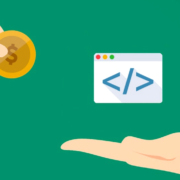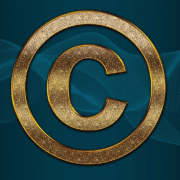In order to start earning mineral royalty payments, you must first acquire mineral rights. Are you looking at your options? Then you may be able to purchase mineral rights as a part of a larger property transaction. Let simply say it is a standalone asset. Usually, there is a separation process of mineral rights from their surfaced rights. After that, the orphan subsurface is considerable a “split” or “severe”. In this article, we will outline everything you need to know about mineral rights severance. We will focus more on the United States.
What is Severance?
In the vernacular of today, severance is most useable to describe “severance pay”. Some call it “severance packages”. This is in which an employee continues to receive paychecks after the dismissal from an employer. But don’t worry we’re here to teach you about mineral rights.
The term severance means the act of ending a connection or relationship. Severance is useable to describe the end of a relationship. In this case, the separation of a property into two different owners.
Fee Simple Estates
A fee simple estate is the highest level of property ownership in the United States. Fee simple estates are also commonly referred to as “unified estates” or “unified tenure”. Those that purchase their property in a fee simple estate acquire the land’s surface. Moreover, it includes the subsurface, water rights, buildings, and other features.
Severed Estate
A severance estate, or a “split estate,” is a property that has division amongst multiple owners. In this sense, the land has been “severed” or “split”. The purpose is to best use its resources to fit the needs of separate parties.
Severed estates are very common in mineral rights and water rights transactions in which local regulations prevent new owners from acquiring shared resources. Existing fee simple owners can also sever their estate at any point in order to sell off their mineral rights.
Severed Mineral Rights
Severed mineral rights exist independently of surface property owners. When in possession of mineral rights severance, individuals and companies typically have permission to perform any reasonable action. This is in order to explore and extract minerals from the property. With this, severed estate owners must work in conjunction to find the best solution.
What’s next after the severance of a deed? A creation of a separate mineral deed takes place to accommodate the new property owner. The new deed can outline full or partial ownership of the property’s mineral rights, depending on the conditions of the contract.
Fragmented Mineral Rights
If there is a division of split-estate mineral rights among multiple owners, it is a bit redundant. Redundant refer to them as “severed severed” mineral rights. Instead, mineral rights divided among multiple parties are called fragmented mineral rights.
With oil fields and fossil beds taking up massive amounts of space below the surface of the earth, mineral rights can be split among an essentially infinite number of separate owners.
What is Severance Tax?
Although they share the common root term of “sever,” severance tax is not applied at the time when severed estates are established. No, instead, severance tax actually gets its name for when natural, non-renewable resources are “severed” from the earth.
What this means is that severance tax is applied at the time of mineral extraction, rather than when an estate is split. All national and state severance taxes are unavoidable, whether or not the operation ends up turning a profit.
Who pays severance tax for minerals?
At the time of extraction, severance tax is applied to the energy production company as well as any individuals or entities that hold mineral interests in the operation. Most commonly, severance tax is applied to crude oil, natural gas, and coal operations.
The severance tax is highly variable at rates for different materials and different parts of the country. Today, nearly all of the states that produce oil or gas have applied some sort of severance tax for operations within the state borders.
What is the severance tax on oil?
In 2021, the current national average severance tax on oil and gas is typically around 5 to 6% of the production’s gross value. Many states have tiered severance taxes that apply different rates for operations of varied magnitude. Severance taxes are payable directly to local governing bodies.
Throughout the country, they define severance tax by a few different terms. However, the most common of which is “production value tax.”
Wrapping Up
In conclusion, it is very easy to get terms confusing. This is when considering estates severance and severance taxes are payable on active mineral rights. We hope that this article is helping you define these terms as it provides information on ways in which severance works in the realm of mineral rights and oil and gas royalties.
If you have further questions about mineral rights severance, feel free to reach out to us here.










